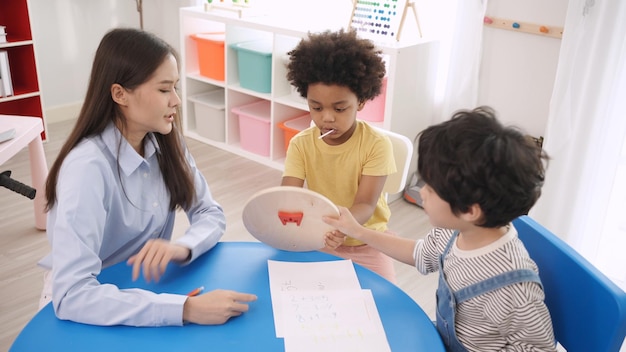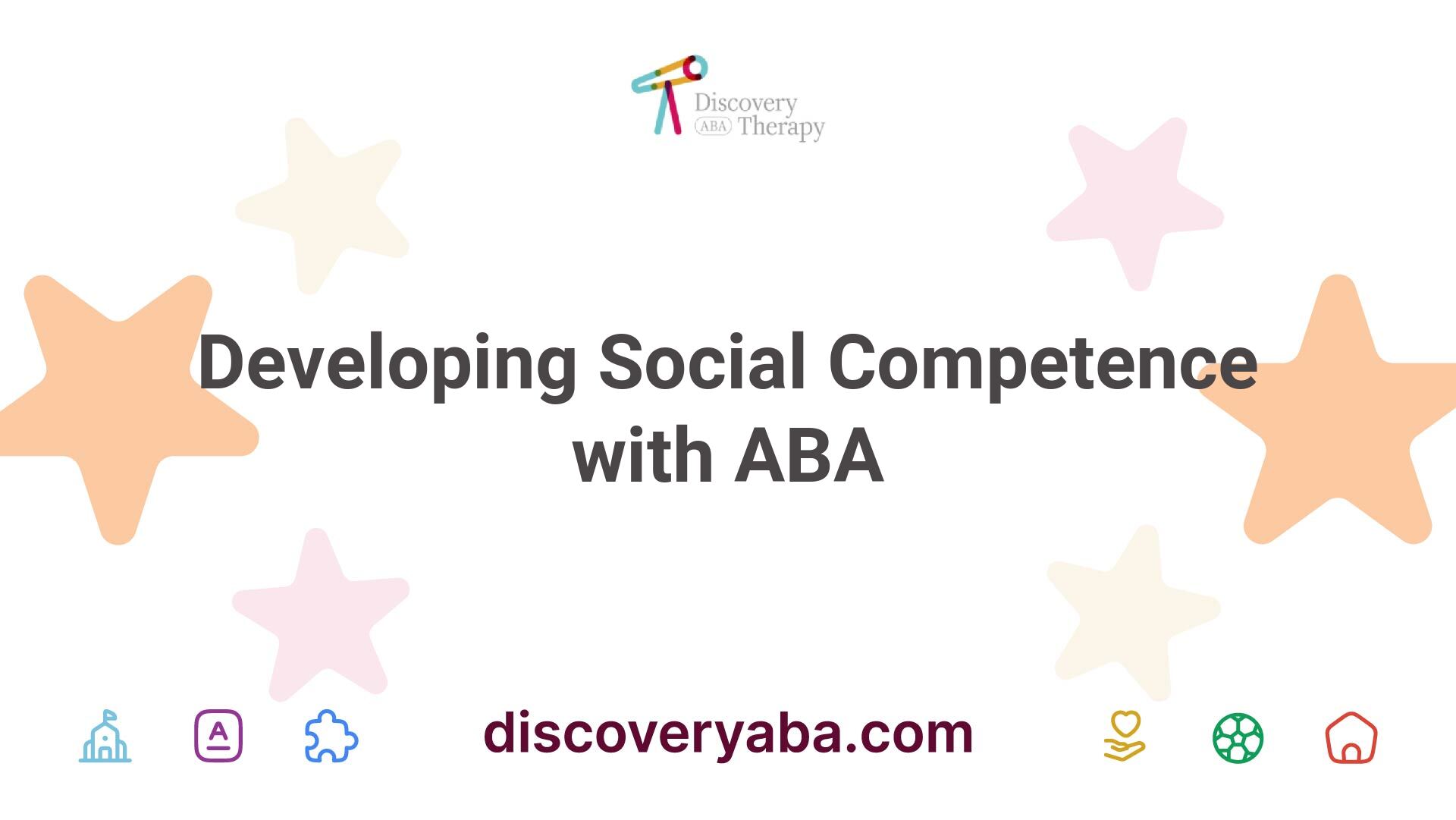ABA Therapy for Social Skills Development
Explore aba therapy for social skills development and empower individuals on the autism spectrum to thrive.

Understanding ABA Therapy
Basics of ABA Therapy
Applied Behavior Analysis (ABA) therapy is a scientific approach designed to help individuals with autism and related developmental disorders develop new skills and manage behaviors effectively. This therapy has been utilized since the 1960s and remains one of the most widely used interventions for autism due to its evidence-based effectiveness. According to Autism Speaks, more than 20 studies have demonstrated that intensive and long-term application of ABA principles can lead to improvements in intellectual functioning, language skills, daily living capabilities, and social interactions.
ABA therapy operates on the foundation of understanding how behavior is influenced by the environment, employing techniques that reinforce desired behaviors. The therapy emphasizes positive reinforcement, which encourages individuals to repeat behaviors when they are followed by rewards or valued outcomes [1].
Principles of ABA Therapy
The principles of ABA therapy hinge on several core concepts that guide the therapeutic process. These principles include:
| Principle | Description |
|---|---|
| Positive Reinforcement | Encouraging desired behaviors by providing rewards or recognition, increasing the likelihood that these behaviors will be repeated. |
| Task Analysis | Breaking down complex behaviors into smaller, manageable tasks to make learning more accessible and achievable. |
| Data Collection | Systematic monitoring of behavior changes to evaluate the effectiveness of the interventions. |
| Individualized Approach | Tailoring the ABA program to fit the unique skills, needs, and preferences of each individual, ensuring that treatment is relevant and effective. |
A qualified Board Certified Behavior Analyst (BCBA) customizes ABA programs based on individual assessments, family situations, and the specific skills one needs to develop [1]. This personalized approach ensures that each child receives support tailored to their unique circumstances and challenges.
The effectiveness of ABA therapy as a best practice has been recognized by major health authorities, including the US Surgeon General and the American Psychological Association, further underscoring its value as a proactive intervention for individuals needing support in social skills and behavioral management [2]. For parents and caregivers seeking more information on implementing ABA strategies at home, resources are available on how to implement ABA therapy at home.
Role of Behavior Analysts
Behavior analysts play a crucial role in the effectiveness of ABA therapy for social skills development. Their expertise ensures that each therapy program is tailored to meet the unique needs of individuals with autism.
Importance of BCBA
A Board-Certified Behavior Analyst (BCBA) is a trained professional who designs and oversees ABA programs. This type of analyst customizes therapy to match each learner's skills, needs, interests, preferences, and family situations [1]. The BCBA reviews data, sets goals, and modifies the program as necessary to reflect the child's progress and changing needs.
The following table showcases the key responsibilities of a BCBA:
| BCBA Responsibilities | Description |
|---|---|
| Program Design | Customizes programs based on individual assessments |
| Data Analysis | Reviews ongoing data to track progress and adjust strategies |
| Supervision | Oversees registered behavior technicians (RBTs) |
| Goal Setting | Establishes short-term and long-term objectives |
| Training and Support | Provides training to family members and caregivers |
Having a qualified BCBA ensures that the interventions used within ABA therapy are not only evidence-based but also effective in improving social skills and overall functioning.
ABA Therapy Team
In addition to the BCBA, an effective ABA therapy team typically consists of registered behavior technicians (RBTs) and, in some cases, other professionals such as speech therapists or occupational therapists. While the BCBA oversees the program, RBTs implement the strategies on a day-to-day basis, working directly with individuals with autism [1].
The composition of an ABA therapy team may include:
| Team Member | Role |
|---|---|
| Board-Certified Behavior Analyst | Designs and supervises therapy programs |
| Registered Behavior Technician | Implements the ABA strategies as guided by the BCBA |
| Speech Therapist | Assists with language and communication skills |
| Occupational Therapist | Supports the development of daily living skills and motor skills |
This collaborative approach in ABA therapy ensures comprehensive support for individuals with autism, addressing their diverse needs and promoting social skills development effectively.
For parents and caregivers looking to begin this journey, finding a qualified ABA therapist is essential. Resources on finding qualified aba therapists can assist in identifying professionals who are well-equipped to help.
Effectiveness of ABA Therapy
Evidence-based Practice
ABA therapy, or Applied Behavior Analysis, is recognized as an evidence-based best practice treatment for autism spectrum disorder (ASD). The US Surgeon General and the American Psychological Association endorse its effectiveness, demonstrating that it has undergone rigorous scientific evaluation with proven outcomes. This evidence highlights the therapy's focus on antecedents and consequences of behavior, enabling it to effectively modify behaviors and enhance skills in children with autism [1].
Multiple studies substantiate the effectiveness of ABA therapy, showing significant improvements across various developmental areas. A meta-analysis involving 14 randomized control trials with 555 participants indicated promising results in socialization, communication, and expressive language when utilizing ABA-based interventions for children with ASD.
Moreover, more than 20 studies confirm that intensive and long-term ABA therapy can lead to enhancements in:
- Intellectual functioning
- Language development
- Daily living skills
- Social functioning
Impact on Autism Spectrum Disorder
The impact of ABA therapy on children and youth with ASD has been extensively documented. From studies conducted up until January 1, 1997, through December 31, 2020, improvements were observed across seven of the eight outcome measures, which include cognitive, language, social/communication, problem behavior, adaptive behavior, emotional, and autism symptoms [4].
The following table summarizes the improvements linked to ABA therapy based on systematic reviews:
| Outcome Measure | Improvement Observed |
|---|---|
| Cognitive skills | Moderate |
| Language skills | Moderate to Very High |
| Communication skills | Moderate to Very High |
| Nonverbal IQ scores | Moderate |
| Adaptive behavior | Moderate |
| Socialization | Moderate to High |
| Daily living skills | Lesser Improvement |
These findings showcase the ability of ABA therapy to significantly enhance essential skills, enabling parents and caregivers to recognize its value as a critical component of aba therapy for social skills development. This insight encourages parents to consider ABA therapy as an effective method for supporting the growth and development of their children with autism.
Social Skills Development
Importance of Social Skills
Social skills are vital for effective interaction and communication. They encompass verbal and non-verbal language, gestures, body language, and speech. Strong social skills developed early in life enhance the likelihood of forming positive relationships with family, friends, teachers, and colleagues later on. The ability to engage constructively with others is essential for individuals with autism spectrum disorders (ASD) to navigate social contexts successfully.
The following table summarizes the key areas impacted by social skills development:
| Area | Description |
|---|---|
| Relationships | Ability to form and maintain friendships |
| Communication | Effectiveness in expressing thoughts and emotions |
| Social Integration | Participation in group activities and social events |
| Emotional Regulation | Managing feelings in social situations |
ABA Strategies for Social Skills
ABA therapy employs customized strategies to enhance social skills, with therapists modifying programming according to individual needs. The therapy team conducts thorough assessments to identify areas needing focus, actively involves parents and caregivers in the treatment process, and determines prerequisite skills before progressing to more complex social objectives [5].
Common ABA strategies include:
- Modeling: Demonstrating appropriate social interactions for the individual to observe and imitate.
- Role-Playing: Practicing social scenarios in a controlled environment to build confidence and understanding.
- Social Stories: Using stories to illustrate social situations and expected behaviors, helping the individual understand social cues.
- Positive Reinforcement: Rewarding positive social interactions to encourage their recurrence.
- Video Modeling: Showing videos of peers engaging in social interactions to guide the individual.
Improvements have been observed across various outcome measures related to social skills, cognitive abilities, and adaptive behavior for children and youth with autism undergoing ABA therapy [4]. As each individual’s needs are assessed, goals are personalized to ensure relevance and effectiveness, emphasizing the development of foundational skills for more advanced social goals [5].
For parents seeking additional information on the implementation of techniques in everyday scenarios, resources such as aba therapy for non-verbal children may provide helpful insights.
Curriculum and Techniques
Teaching Social Skills
A comprehensive curriculum in ABA social skills programs breaks down complex social skills into smaller, manageable components. These skills may include taking turns, engaging in conversation, sharing, joining a group, and understanding nonverbal cues such as facial expressions and tone of voice. The ultimate goal is to foster inclusion and support the development of friendships in various settings such as classrooms and communities [7].
The teaching process typically follows the structure outlined below:
| Skill Component | Teaching Strategy |
|---|---|
| Taking Turns | Modeling turn-taking through games |
| Engaging in Conversation | Role-playing scenarios |
| Sharing | Group activities focused on sharing |
| Joining a Group | Facilitating small group interactions |
| Understanding Nonverbal Cues | Visual aids and practice scenarios |
This systematic approach allows learners to gradually build upon their social skills, ultimately leading to increased confidence and competence in social interactions.
Behavioral Skills Training
Behavioral Skills Training (BST) is a key method used in ABA to effectively teach social skills. This approach integrates several important components:
- Explanation: The importance of the social skill is explained to the learner to provide context.
- Modeling: The skill is demonstrated by the instructor or a peer, allowing the learner to observe the correct behavior.
- Role-playing: The learner practices the skill in a controlled setting, often with the guidance of an instructor.
- Feedback: Constructive feedback is provided to help the learner refine their skills How to ABA.
The structured nature of BST involves gradual steps that lead from demonstration to independent application of the skills, ensuring effective learning and retention. For parents and caregivers looking to enhance the application of these methods, resources on how to implement ABA therapy at home can provide valuable insight.
These curriculum options and techniques are designed to help individuals with autism develop essential social skills, laying a foundation for improved interactions and relationships in their everyday lives. For further reading on success stories from ABA therapy, check out our article on ABA therapy success stories.
Assessments and Progress
Tracking the progress of students undergoing ABA therapy for social skills development is critical for evaluating the effectiveness of interventions. This process involves systematic data collection and monitoring to ensure that strategies are meeting the needs of individuals with Autism Spectrum Disorder (ASD).
Data Collection
Data collection serves as the foundation for tracking progress in ABA therapy. Educators and behavior analysts must gather baseline data prior to implementing any intervention. This involves collecting data on target behaviors for a minimum of four days. Doing so helps to identify patterns in behaviors that may inform future strategies IRIS Center, Vanderbilt University.
Once interventions are in place, ongoing data should be collected to assess effectiveness. The data collected after implementing an intervention is compared with baseline data to determine whether the desired changes in behavior have occurred.
| Data Collection Phase | Duration | Purpose |
|---|---|---|
| Baseline Data | At least 4 days | Identify patterns and establish behavior reference points |
| Post-Intervention Data | Ongoing | Evaluate strategy effectiveness and adjust as necessary |
Monitoring Progress
To ensure successful outcomes in ABA therapy, it is essential that practitioners not only collect data but also monitor progress consistently. This includes checking whether the evidence-based practices (EBPs) being implemented are effective for each individual. Fidelity of implementation should also be maintained, meaning the strategies are used as intended by their developers IRIS Center, Vanderbilt University.
Effective monitoring involves regularly reviewing collected data to make informed decisions regarding the therapy plan. Educators are encouraged to implement evidence-based practices that have demonstrated positive outcomes for individuals with autism. According to the National Professional Development Center on Autism Spectrum Disorder, 27 evidence-based practices have been identified that help in improving outcomes for students with ASD IRIS Center, Vanderbilt University.
Through diligent data collection and effective progress monitoring, parents and caregivers can better understand the effectiveness of ABA therapy and support their loved ones in achieving their social skills development goals. For further information on implementing strategies effectively, check our article on how to implement aba therapy at home.
References
Find More Articles
Contact us
North Carolina, Tennessee, Nevada, New Jersey, Utah, Virginia
New Hampshire, Maine
Massachusetts, Indiana, Arizona, Georgia
.avif)



































































































